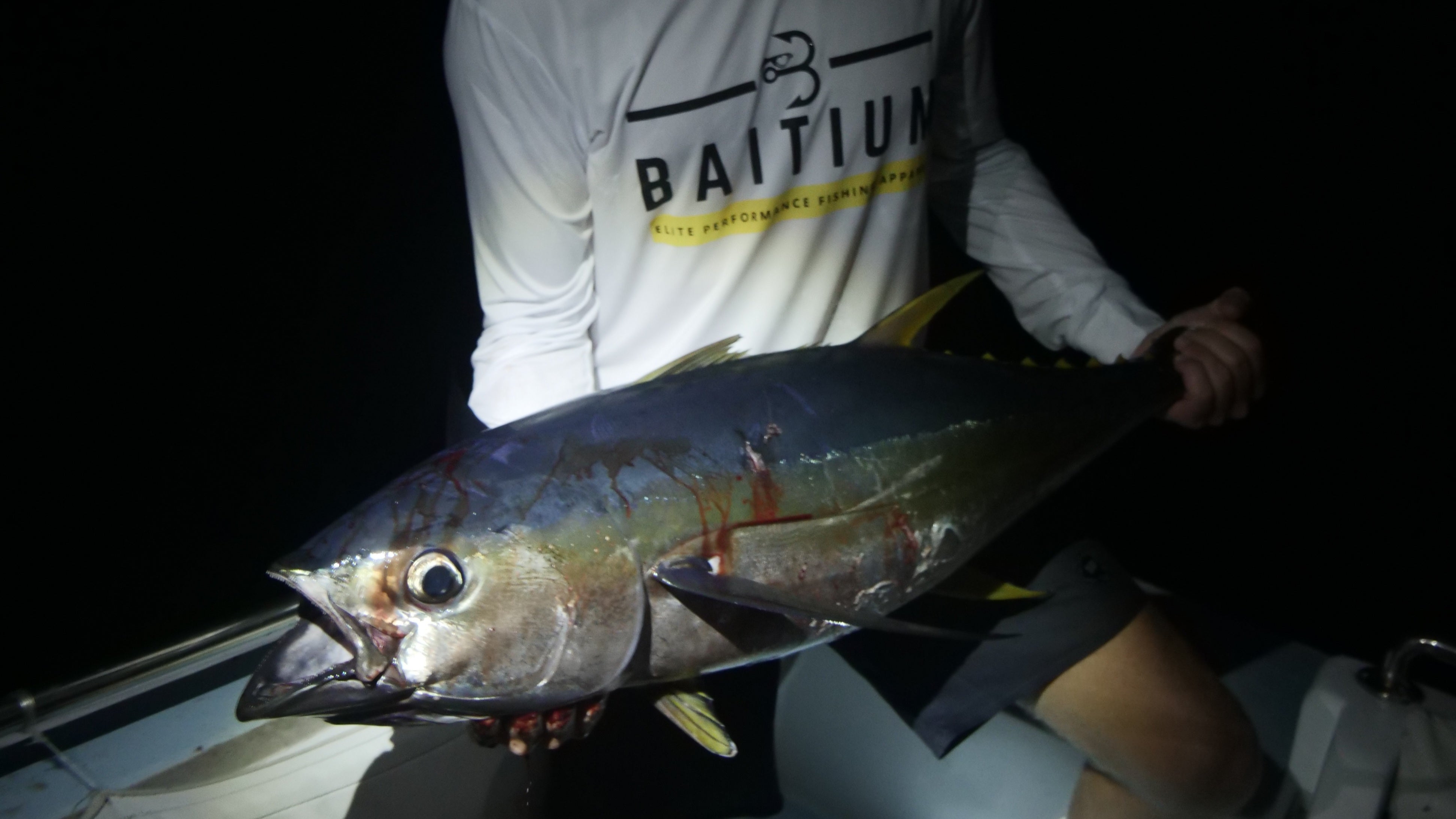Table of Contents
A lot of fish are active at nighttime. Fish such as largemouth bass, carps, and the northern pike are some of the species you’d expect to see in dark waters. This is especially true during the summer; because hotter weather means warmer waters, fish are more likely to come out at night when it gets cooler. That, and because warmer water has less oxygen in them, leading to relatively inactive fish.
But as soon as the temperature drops, fish activity generally increases, making night fishing a favorable option for nocturnal anglers. If you just don’t see yourself fishing during the day, check out these tips and get started with fishing at night.
What to bring
It’s the same at any time of day: no gear, no fishing. But at night, priority numero uno should be lights, lights, and more lights. For yourself, make sure to bring hands-free lights such as headlamps, and for fish, some underwater night lights would help. Of course, they’re not substitutes to standard safety equipment such as floatation devices, but lights help make sure that you wouldn’t fall to the water in the first place.
As for bait, live bait would be best, because although fish have some level of night vision, they tend to rely more on their other senses at night. Either live bait or lures such as topwater lures that make a lot of movement and noise are ideal. The usual tackle box items such as hooks, sinkers, bobbers, and the like, however, would do just fine.
In a way, though, you’re on equal footing with fish, as you also need to rely on senses other than sight to reel in some catches. That’s exactly why you have to use rods that up your sensitivity to bites. You won’t always see fish, but you should definitely be able to feel when they’re there.
Lastly, if you’re going to fish at night, make sure you dress for the occasion. Check the local weather forecast in the area you’re going first, and if temperatures fall significantly, fleece or waterproof jackets would spare you from freezing. They would help you avoid bites from bugs and insects while they’re at it, too.
When and where to fish
Just like sailors out at sea, fish look for artificial light at night, so fish around those areas. Predators will be nearby, too, likely around the edges of the light to catch prey unannounced. Easy enough, right?
It’s the timing that makes it a bit tricky, though. The basic rule is to actually wait until sun down, as there is a small period of fish dormancy during the transition from light to dark. But if you want the advanced stuff, look up.
No, literally, check what phase the moon is at, because fish are most active during full moons. This is because the moon provides natural light and affects the tides, which then affects fish. As a rule of thumb, higher waves and more light = more fish, because light draws them closer to the surface due to better vision.
In contrast, new moons would have relatively lower fish activity, since it provides the least amount of light and lowers waves. If you ever encounter this phase, spotlights, instead of headlamps, could help, as they’re “less disruptive” to fish.
Now you know how to fish well at night! But what about during the rain? Or while making conversation with angler buddies? Read through our blog for more!
MOST READ NEWS:
How To Use Your Fishing Records to Catch More Fish
Track your fishing trips, analyze patterns, and refine your techniques with a fishing log to catch more fish on every outing!
Solo Fishing Safety Tips: Stay Safe and Enjoy the Outdoors
Learn essential solo fishing safety tips: gear checklist, boat safety, emergency preparedness, weather monitoring & fishing location scouting. Stay safe on the water.
Secrets to Winter Fly Fishing Success
Master winter fly fishing with expert tips on trout behavior, essential gear, and proven techniques. Learn the secrets to catching more fish in cold weather.
How Cold Water Changes Fish Behavior: Insights for Anglers
Explore how cold water affects fish behavior and fishing techniques, enhancing your angling success and strategy.
Is Tech Making Fishing Too Easy? Exploring Forward-Facing Sonar (FFS)
Learn about forward facing sonar in fishing - what it is, how it works, rules for tournaments, ethics, and tips for finding fish with this game-changing technology.
Plan Your Best Fishing Trip Yet this 2025: A Complete Guide
Plan your fishing trip this off-season. Learn to choose destinations, prep gear, pick bait, and trust Baitium for expert tools and tips!
15 Fishing Resolutions for 2025: Set Yourself Up for Success
Discover 15 essential fishing resolutions for 2025: tackle organization, gear maintenance, angling techniques, conservation tips, tournament prep, and fishing safety guidelines.


